Description
Great Expectations is one of Dickens’ best works, and it can be said that Charles Dickens, in writing this novel, talks about the themes of aristocracy and lower class confrontation, love and horror, murder and crime.
The Book of Great Dreams by Charles Dickens
Charles Dickens’s enduring and unique works have led to his popularity extending beyond the United Kingdom, and today the whole world recognizes him as a novelist with social concerns. “Big Dreams” is one of his most famous works, in which the differences between the working classes are narrated with the spice of romantic relationships in a time of crime.

A summary of the story of big dreams
The story of big dreams is told by a 7-year-old boy named “Pip” and continues until he is 35 years old. Pip is a boy who lives with his blacksmith sister and brother-in-law. They live a humble and humble life in rural cottages.
Some time passes and a middle-aged and rich woman named “Mrs. Howesham” asks Pip to visit him sometimes to talk and accompany him. Havisham is an immoral woman who lives in an old, dilapidated mansion, where the sorrows of the past are rippling.
Great Expectations
Mrs. Howesham’s mistress has left him cruelly in the past, just at the wedding. That is why she hates men and wants to take revenge on men.
Mrs. Howesham has taken care of a beautiful but arrogant and stubborn adopted girl named “Estella” in order to raise her to hate and hate men like herself. After a while, Pip travels to this proud Stella’s house. But right from the moment the little girl humiliates him for his living conditions, Pip has big dreams, and this dream is to get rid of the humble rural life and live like nobles and aristocrats. From these moments, Pip Pee’s story goes to its great dreams and encounters events and happenings and finally a strange ending.
The Life of Charles Dickens; From magazine to book
Charles John Hoffham Dickens is a journalist, novelist and social activist born on February 7, 1812 in England. His father was an employee of the Navy Operations Department, but his family was impoverished due to extreme spending. As a result, Dickens, then 12, was forced to work in a vaccine factory for a living.
Perhaps the impact of Dickens’s humble life as a child also helped shape Pip’s character in the story of big dreams.
Dickens has gained worldwide popularity for his powerful prose and for creating enduring characters in the history of literature. His works include “David Copperfield”, “Big Dreams”, “Oliver Twist”, “The Tale of Two Cities”, “Nicholas Nickleby”, “Christmas Hymn”, “Little Dorothy”, “Lawless House”.
Dickens writing style; From realism to idealism
People acquire the skill of reporting and do this skill as a job, naturally get a more accurate and focused view of their surroundings and succeed in narrating realistic images of people in the community. Looking at Dickens’s words, descriptions, atmospheres, and characterizations in his novels, one can see the impact of Dickens’s work from the days he worked as a reporter and journalist.
Dickens first published all of his stories in a series of magazines, welcoming feedback from his readers about the stories, and later publishing all of his stories in novel form.
Dickens is a realist writer. In the Victorian era, he created amazing works of social style. In his works, he speaks in a powerful language about the social concerns of the day. Dickens is well acquainted with the poor and the lower classes of society.
Pip’s character in the novel Big Dreams is one of those people in the society who is faced with humiliation and insult by the rich and powerful of the society due to poverty. Pip pursues his aspirations in order not to lag behind the upper echelons. Dickens has a relatively difficult language that he sometimes mixes with humor and creates enduring characters like Pip in the novel Big Dreams.
In some ways, Dickens’s novels can also be considered ideal. While showing the poverty and class differences of the society, he shows the image of love, effort and perseverance with a simple outline. With his idealism, he gives hope to the people, and it can be said that this public interest in his works is one of the reasons for his success.
Dickens creates idealistic and emotional characters who are in conflict with society. Stories that show moral points as well as his narratives of the state of society. An example of his idealism can be seen in Oliver Twist. In this book, Dickens portrays an idealistic boy who never gives up his values.
Dickens’s distinctive prose and style is defined not only by narrating the political and social situation and the differences between the classes of society, but also by using beautiful and influential literary arts to describe people and their feelings, which shows the genius and mastery of this English writer in creating unique works. .
The theme of Dickens’s big dreams
Great Expectations is one of Dickens’ best works, and it can be said that Charles Dickens, in writing this novel, talks about the themes of aristocracy and lower class confrontation, love and horror, murder and crime.
In this book, he portrays the contrast between darkness and light for the reader. Pete inspires the reader with a sense of fear and confusion by describing dark spaces such as Mrs. Howesham’s dirty and untidy garden and the crimes that take place in the novel. But what gives the reader a sense of satisfaction is the light of hope that illuminates this darkness.
Big dreams are a narrative of the hardships and sufferings that every human being may face during his or her lifetime. Problems that may even take man away from his existential values and dignity. This novel shows that property and wealth can not change within the characters, and that in order to reach our true selves and our sacred intrinsic value, we must set foot on the right path.
In The Dreams of Great Dreams, Charles Dickens portrays bad traits such as greed, resentment, cruelty, and stinginess as opposed to good traits such as contentment, chivalry, forgiveness, and sacrifice. This is the idealistic and realistic image that has made Dickens’s work shine in the world.
Charles Dickens in Cinema and Television
Undoubtedly, Charles Dickens is one of the most popular writers in England after “William Shakespeare”. Dickens has been a prolific writer, writing in most genres such as novels, short stories, plays, and nonfiction. But it can be said that cinema and theater were the two frames that made him more famous in the world. Probably many people who have not even read a book by Charles Dickens know him because of the films adapted from his works.
The famous British director and screenwriter David Lane made a film of the same name in 1946, based on the story of Charles Dickens’ Big Dreams. The film was able to acquaint people well with the social and political realities that Dickens narrated in the book. David Lane won the 1947 Academy Award for Best Picture in a Black and White Film.
In 2012, the latest adaptation of the book “Big Dreams” directed by Mike Newell was made. The film is a drama film starring Ralph Fiennes and Helena Bonham Carter.
Dickens and the translation of his works into Persian
There are differences between reading Dickens’s works in the original language and translating them. Because it is a bit difficult to transfer Dickens’s specific language style and literary industries to Persian. Dickens’s style is such that its translation should not be higher or lower in quality than the original text. Of course, the fact that most Iranian translators go to the mythical works of the novel is worth considering. Dickens’s works are no exception and there are many translations of them in the publishing market.
Ebrahim Younesi is a prominent translator who has more than 40 translations of prominent Iranian works in his portfolio. Preserving Dickens’s style and tone, he has translated “Great Dreams”, “Law-abiding House” and “The Story of Two Cities” into Persian.
The translation of “Enayatullah Shakibapour” from the book “Great Wishes” is one of the old translations of this work. “Mohammad Ghazi” and “Reza Aghili” are also translators of Dickens’ work called “Little Dorit”. Other well-known translators in Iran who translate Dickens’s works are Mehdi Ghobraei, Mehdi Sahabi, and Minoo Moshiri.
But it must be admitted that the language of translation of classical works after many years must be flexible in order to be introduced to the new generation of readers.
Mohsen Soleimani is another translator who has translated the book Big Dreams into Persian. This book has been published by Ofogh Publishing. The translation of this work has been done in a way that brings the audience of the new generation with it.
Other translations of the book Big Dreams include the translation of “Hamid Reza Baluch” published by Majid, the translation of “Ebrahim Younesi” published by Dostan, the translation of “Parvin Adib” published by Parseh, and the translation of “Hamed Ashrafi Aidenloo” published by Andisheh Kamyab Institute.
In parts of the book Big Dreams we read:
It was cold and humid that morning, so no matter how fast I ran, my feet would not get warm. I knew the way to the old artillery, because I had gone there with Joe on Sunday; But in that thick fog I lost my way and went a little further to the right.
One evening when the weather was very cold and it was getting dark, Pip went to the church cemetery alone.
Great Expectations
The wind howled loudly around him. Pip looked at the gravestones of his father, mother, and five younger brothers, realizing for the first time that they were all dead and abandoned forever. Feelings of loneliness and fear took over and she began to cry. At that moment, a voice suddenly shouted: Take your voice …
And suddenly Pip saw a strong man in front of him.
The man angrily took him in his bruised hands, which had been wounded by thorns and stings.
Pip was terrified. She had never seen the man before. The man was wearing old, dirty gray clothes and an iron chain around his ankles. His clothes and the scarf around his neck were wet and muddy.
Man growled: What is your name?
Pip said in fear: Pip sir.
The man asked: Where do you live?
Pip pointed to a hut about a mile away.
Index of the book Great Expectations
Publisher Introduction
Chapter 1: “Pip Meets a Convict”
Chapter 2: “Pip Becomes a Thief”
Chapter 3: “Mrs. Howesham”
Chapter 4: “A Man with a Scraper”
Chapter 5: “Stella”
Chapter 6: “Pip is praised by Joe”
Chapter 7: “Ms. Joe is Attacked”
Chapter 8: “Mr. Jaggers Reports”
Chapter 9: “Pip Goes to London”
Chapter 10: “Herbert Envelope”
Chapter 11: “Living in London”
Chapter 12: “Meeting by Joe”
Chapter 13: “Stella Grows Up”
Chapter 14: “Joe was left alone”
Chapter 15: “Pip”
Chapter 16: “Pip Has a Meeting”
Chapter 17: “The Story of the Convicted Man”
Chapter 18: “Farewell to Stella”
Chapter 19: “Do Not Go Home”
Chapter 20: “Who is Stella?”
Chapter 21: “In the Swamp”
Chapter 22: “Four Rowers”
Chapter 23: “Pip and Stella”
Related books
1- Introducing the book Great Expectations on YouTube
2- Introducing the book Great Expectations in Aparat

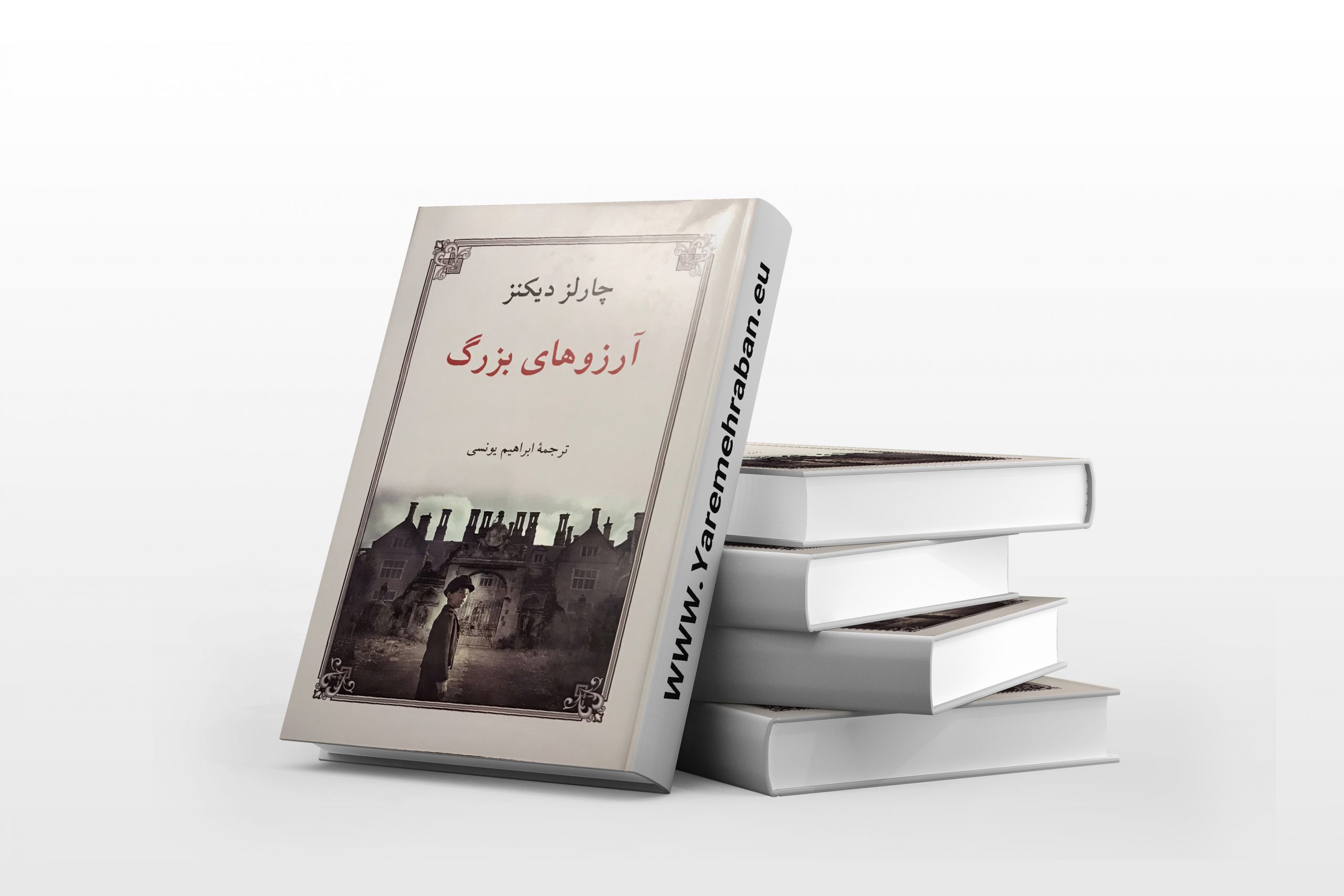





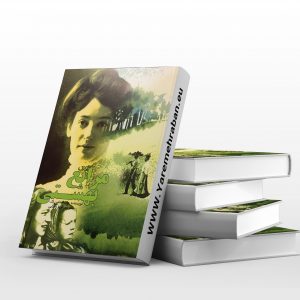
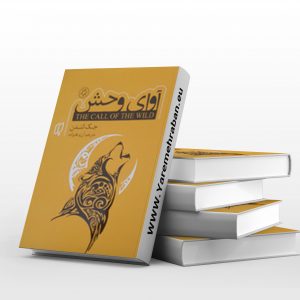
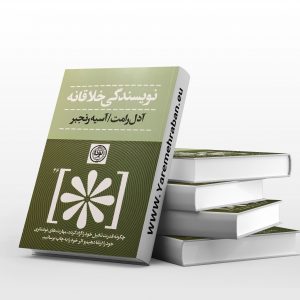
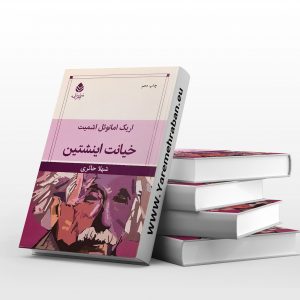
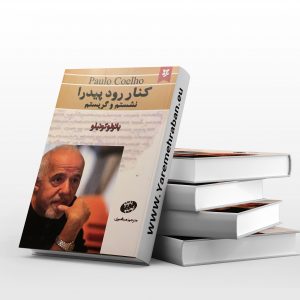

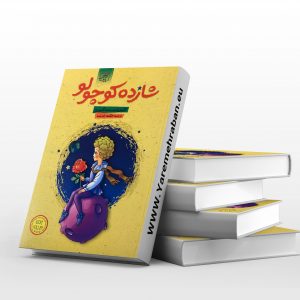
Reviews
There are no reviews yet.